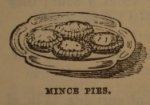With the weather cooling and rain keeping our family (happily!) indoors for much of the Easter break, I seized the opportunity to revisit some old fashioned comfort foods. The nip in the April air inspired me to make some traditional suet ‘crust’ recipes.
I had the good fortune to be given some already cleaned and shredded suet when I was in Hobart last month, from my new foodie friend, Pip Cardo at The Crescent Hotel, which I dutifully froze and flew home with. A good old fashioned butcher should be able to supply you with suet, perhaps with a bit of notice and a warm smile, you could ask them to prepare it for you. Otherwise, remove any ugly bits and grate it. Freezing first makes it easier to grate.
Old fashioned apple dumplings
My father fondly remembers apple dumplings from his childhood in England, between the World Wars. As new season’s apples are just hitting the market, baked apple dumplings turned out to be the prefect autumn treat (recipe below) and were quickly devoured, with ice-cream and warm custard for afternoon tea.
Not suet-able for vegetarians
Suet is an animal fat, generally taken from cows, which protects the animal’s kidneys. Suet was a culinary staple, until health concerns deemed unsaturated animal fats taboo for many of us. Perfectly natural for our grandmothers, the the idea of crude animal fats such as suet, or dripping and lard, became distasteful. Needless to say, they took many foods such as traditional Christmas puddings and fruit mince pies – in their filling and pastry, off the list for vegetarians. Either that, or they had to turn a blind eye. Traditional recipes were altered to accommodate the change in ‘taste’, to use butter or solidified vegetable fats (now taboo due to trans-fats) as substitutes. But with the current trend for nose-to-tail and horn-to-hoof eating, and the move towards more natural, unprocessed foods, I sense a gradual acceptance of suet returning to our kitchens.
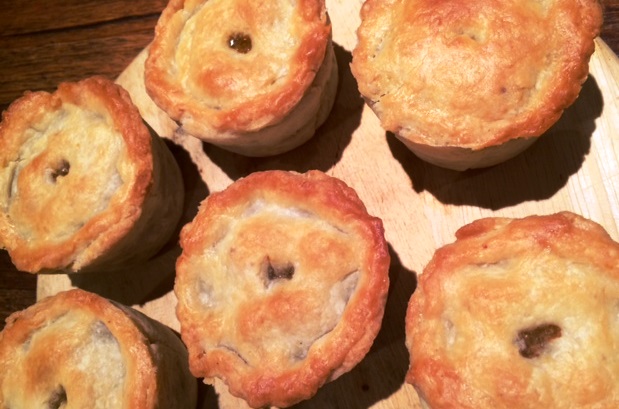
Suet crust pies. Photo Jacqui Newling © Sydney Living Museums
Fats ain’t fats
Those from my generation will know that ‘oils ain’t oils’ (referencing an old advertising campaign), and of course, not all fats behave the same way. The beauty of suet in cooking is that it melts at a much higher point than butter or other solidified fats, and binds with the flour effectively, to give substance and structure. Suet was used in sweet and savoury puddings, dumplings and amazingly short pastry, unparalleled for raised pies. As a rule of thumb, suet crust is made with one part suet to two parts flour, a pinch of salt, and just enough water or milk to form a stiff but pliable dough. Sugar can be added for use in sweet dishes.
Suet ‘crust’ pastry
Ingredients
- 100g plain flour
- 100g self-raising flour
- 100g suet, grated
- 60ml (1/4 cup) cold milk or water
Note
Traditional suet crust pastry is more robust than butter-based pastry. It is ideal for pie crusts or apple dumplings. For a sweet crust, add 1 teaspoon of sugar, or to taste.
Makes approximately 350 g
Directions
| Put the flours in a bowl with 1/4 teaspoon of salt. Stir in the suet with a knife or rub it into the flour with your fingertips. Add enough of the milk or water to make a light dough – but add it a little at a time, as you may not need it all. Turn the dough out onto a lightly floured surface and gently knead until smooth. Roll out to the required thickness with a lightly floured rolling pin. Any unused pastry can be kept in the fridge for up to 3 days. | |
Out to sea
Suet was often used in steamed or boiled applications. Rolled into little balls the suet pastry dough makes amazingly light dumplings to cook pop into a soup or stew for added substance, and melt-in-the-mouth deliciousness. Suet ‘crust’ is also the classic pastry for steamed steak and kidney pudding and ‘Sea pie’, which is totally devoid of seafood, instead, a one pot solution for when you didn’t have an oven, as was often the case on ships at sea. We’ve discussed Sea pie in past posts on this blog, but it is, essentially, a stove-top casserole or stew made in a saucepan, which is covered with suet crust and then allowed to steam. It was a useful hearty dish for land-dwellers who didn’t want, or perhaps couldn’t afford, to heat the oven.
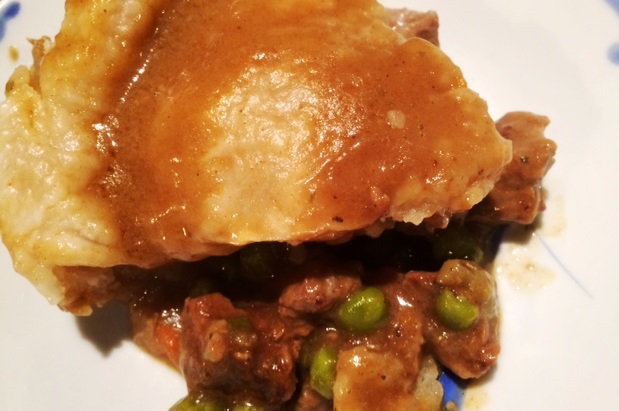
‘Steamed’ Sea pie. Photo Jacqui Newling © Sydney Living Museums
The suet mixture forms a rich, albeit softish pastry, in lieu a crisp oven-baked one. It was tasty but heavy, you can see why these old fashioned dishes were regarded as being ‘stodgy’. Perhaps they’d go down well in the depths of winter on the English moors, but let’s face it, pastry is meant to be brown and crisp, not pale and flaccid.
A better alternative, if you don’t mind having the oven on, is to pop the whole pot in the oven, uncovered, and have the best of both worlds – a one-pot-wonder with a rich crisp pie crust.
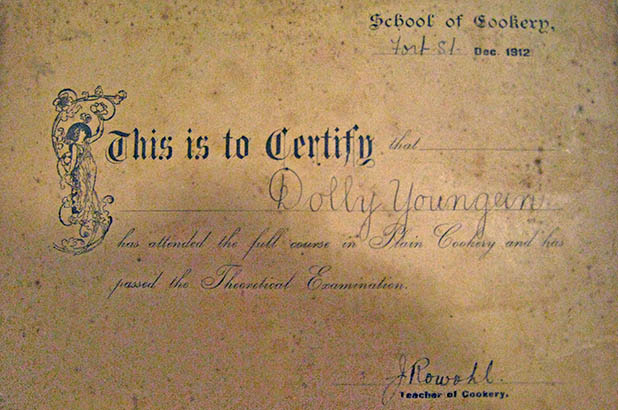
Certificate awarded to Dolly Youngein for cookery. Courtesy John Brown
Childsplay
Dolly Youngein’s cookery class homework book gives us an idea of what culinary arts a 12 year old was meant to understand in the early 1900s. We’ve mentioned Dolly and her work book in previous posts but to refresh the memory, Dolly lived at Susannah Place, the Rocks, when her parents ran the corner shop at number 64 Gloucester Street. She attended the local Fort Street public school. Suet crust, jam roly and Sea pie are included in her carefully recorded collection of recipes. Jam roly is suet crust pastry spread with jam and steamed until cooked through. A less refined version of a Swiss roll, it’s a sweet, dense, hearty and filling ‘rib sticker’ that I’m sure many a child was delighted to have a slice of after school, or with custard as was a recommended accompaniment for pudding (dessert) or supper. I admit I was a bit disappointed with my jam roly attempt, as people speak so fondly of them; again, I think it was the steaming that didn’t appeal. We’ll stick with the baked apple dumplings this winter…
Baked apple dumplings
Ingredients
- 1 batch of suet pastry
- 4 crisp, new seasons apples
- sugar
- sultanas or currants, optional
- apricot jam, optional
- custard, cream or ice cream, to serve
Note
This recipe is adapted from Mrs Beeton's Book of household management, 1861. It is best made with suet 'crust' pastry, but a good shortcrust pastry will suffice. Be sure to encase the apples fully with pastry, leaving no gaps. The 'mother' recipe for suet pastry can also be found on this blog.
Directions
| Preheat oven to C180. Peel and core apples. Divide suet pastry dough into four pieces, and roll out into lengths wide enough to encase each apple. If none was added when making the suet pastry, sprinkle pastry with sugar. Roll each apple in the pastry (sugar side in), wrapping pastry over to encase one end of the apples (wet the ends with water and press gently to help the pastry seal). If filling, fill apple centres with dried fruit and a dab of jam, and seal pastry over. Place apples in a baking tray lined with silicone paper, and bake for 30 minutes or until nicely browned. Serve hot, with warmed custard, whipped cream or ice cream. | |
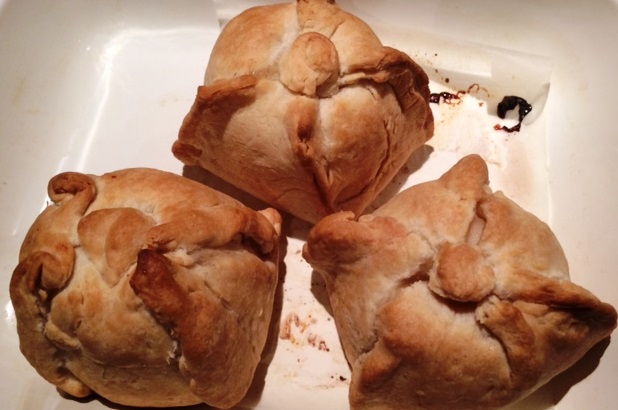
 Print recipe
Print recipe
